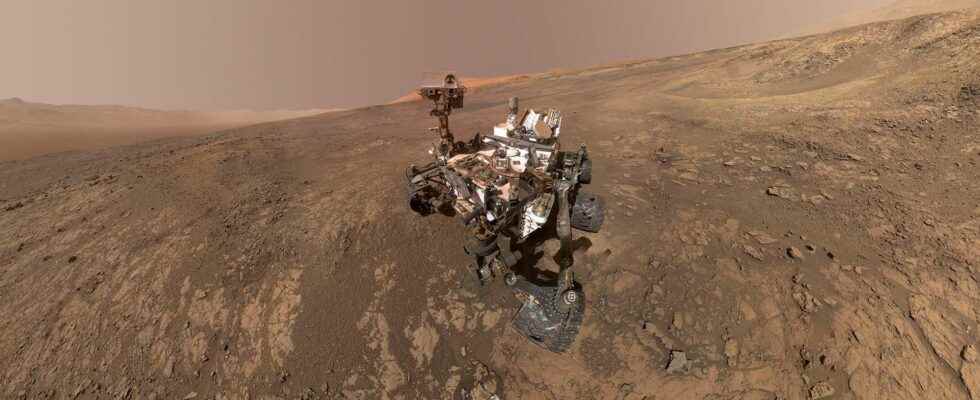Ten years after its landing on Mars on August 6, 2012, the Curiosity rover continues its Mars exploration mission. In ten years of existence, it has enabled many advances, to the point where one can easily say that there is a “before” and an “after” Curiosity.
You will also be interested
[EN VIDÉO] Curiosity: breathtaking views from the side of Mount Sharp Nine years after its landing on Mars and almost as long to cover the bottom of the Gale crater, the Curiosity rover continues its journey on the red planet on the side of Mount Sharp – also called Aeolis Mons. And it continues to return extraordinary images to astronomers curious to learn more than the climatic conditions that may have prevailed on the red planet in the past. (in English) © NASA, Jet Propulsion Laboratory
He has been surveying the Martian soil since August 6, 2012. The small Curiosity rover of the mission Mars Science Laboratory accomplished feats during its ten years of Martian exploration. From the top of its 50 centimeter diameter wheels, it traveled more than 28 kilometers around the Gale crater in which it landed. The Nasa plans to extend its mission until 2025, in order to study the climatic changes suffered by the Red Planet.
Keep exploring, Mars robots! @NASA has extended several long-running planetary missions – including Mars Odyssey, Mars Reconnaissance Orbiter, Curiosity, MAVEN, & InSight. More: https://t.co/GGVebk7gjx
Follow along with all our Mars explorers at https://t.co/POzRmYauHo ???????? ????
—NASA Mars (@NASAMars) April 25, 2022
For ten years, this little rover never ceases to dazzle, with its many selfies, the landscapes he sends, the geological curiosities he captures and above all by the many discoveries he still continues to make today. In total, he has “acquired 494,540 images, sent 3,102 gigabytes of data back to Earth, drilled the ground 35 times and collected 6 samples, and its findings resulted in 883 scientific papers,” explains NASA in a report on the rover.
What have we learned from Curiosity?
As early as 2013, the discovery of small smooth pebbles and then rocks also coming from an old river confirmed a fact already assumed: there was indeedliquid water on Mars. Gale Crater, where Curiosity landed, was actually an ancient lake, fed by rivers for millions of years. Finally, what Curiosity has proven is quite simply the potential habitability of Mars.
On the occasion of the tenth anniversary of Curiosity, NASA organized a conference on the exploits accomplished by this small rover. © Nasa
After water, organic molecules were discovered by the rover in 2018, although they were not associated with biosignatures. Because that is the primary goal of Curiosity: to find traces of ancient Martian life. From what we know, it could have flourished about 3 billion years ago, whenwater on mars was still present, as well as theatmosphere martian. Because Curiosity has also brought new elements to the atmosphere of the Red Planet: currently 100 times thinner than that of Earth, it has gradually disappeared but was previously much thicker. Today, it no longer protects against cosmic rays, making human exploration of Mars complicated to implement.
Interested in what you just read?
